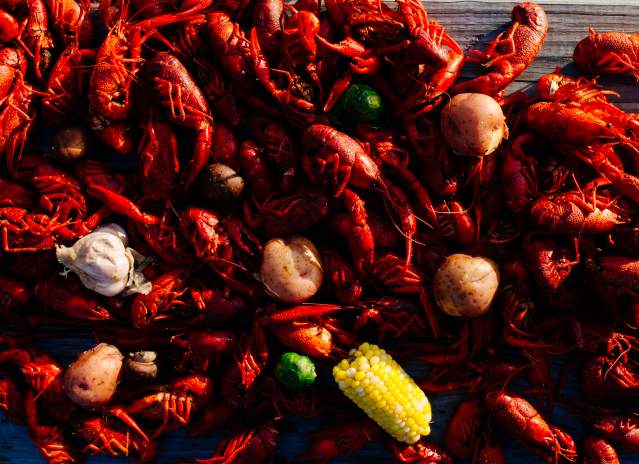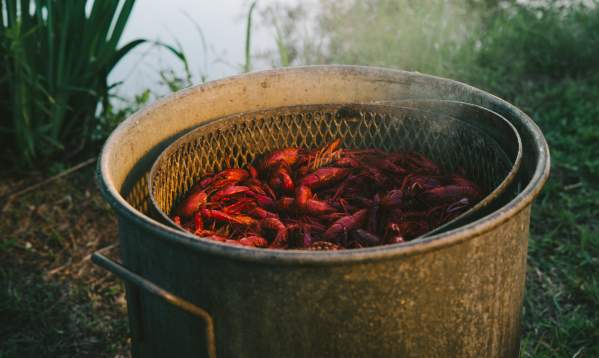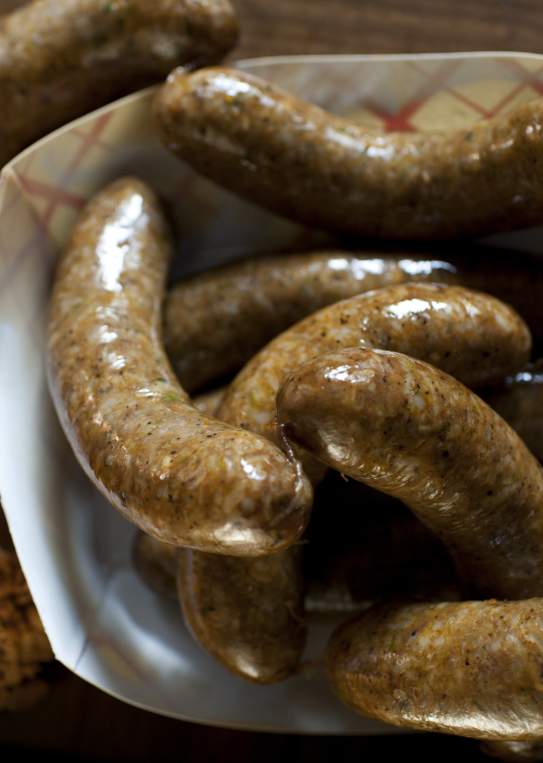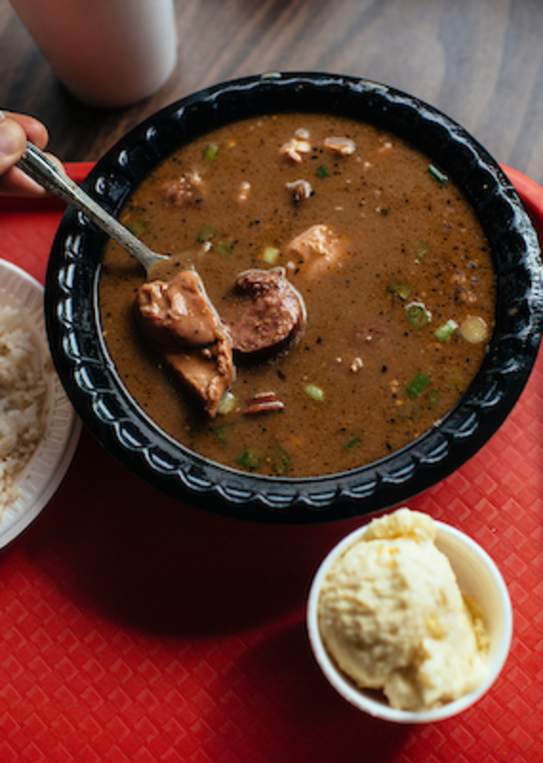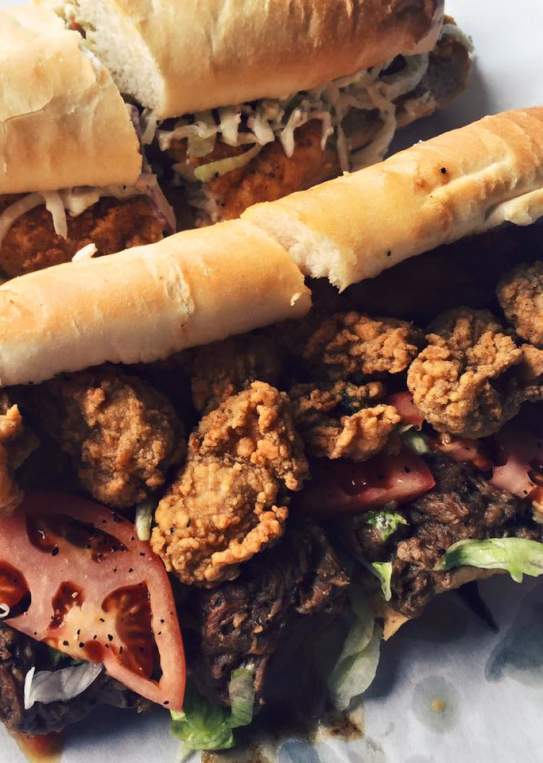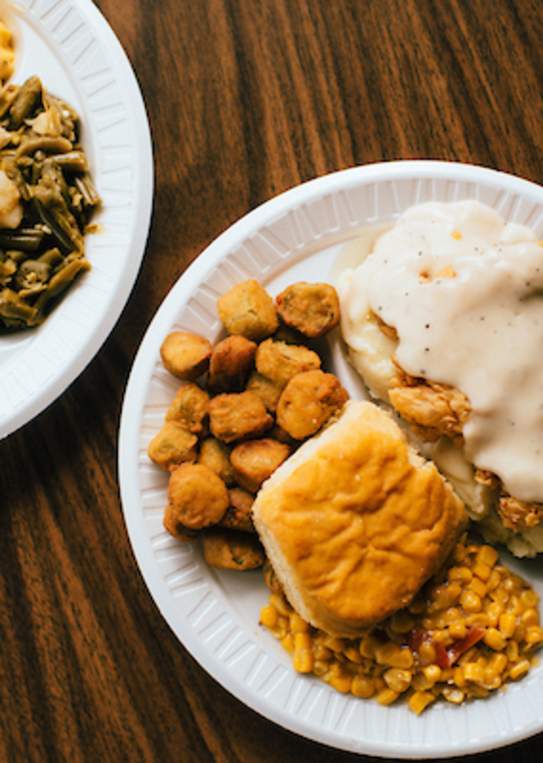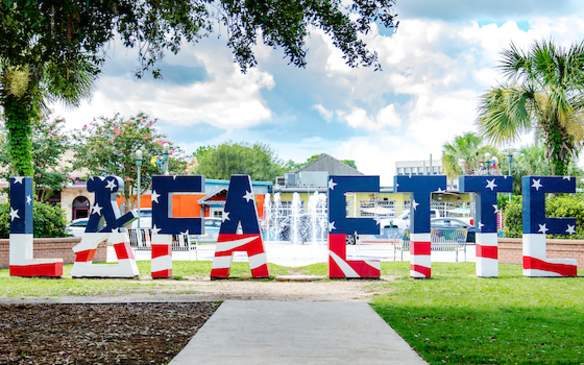Your browser is not supported for this experience.
We recommend using Chrome, Firefox, Edge, or Safari.
Crawfish
Crawfish, also known as crayfish, crawdads or mudbugs to some visitors, are freshwater crustaceans found in the swamps and marshes of south Louisiana. Crawfish have become as much a staple of Cajun & Creole culinary culture as the accordion or fiddle is to our music. The crawfish season differs from year to year depending on the weather conditions, but the true season typically lasts from January to June with March, April and May being the peak months. With such a short season it's no wonder people wait in anticipation all year long for when their favorite crawfish spot opens up. Well, the wait is finally over because it's crawfish season y'all!
We've compiled a list of restaurants that are currently serving crawfish in and around the Lafayette area.
If you know of any other restaurants that are serving boiled crawfish let us know by contacting us and we'll add them to the list. Happy peeling!
Discover the people and stories behind some of Lafayette's oldest boiled crawfish houses.
Alonso's Crawfish Shack
928 Saizan Ave., Port Barre, LA 70577
(337) 585-1070
Alonso's Crawfish Shack #2 and Grocery
503 N University Ave, Lafayette, LA 70506
(337) 603-7464
A-Cajun Crawfish House
215 S.W. Evangeline Thwy., Lafayette, LA 70501
(337) 962-2586
Back Porch Boiling
2120 W. Laurel, Eunice, LA 70535
(337) 546-4032
Big John's Seafood
3630 Broadview Dr., Erath, LA 70533
(337) 937-8355
BOM Crawfish
6068 US-167, Maurice, LA 70555
(337) 893-5200
Buck’s Crawfish Co.
2011 E. Main St., Broussard, LA 70518
(337) 839-9995
Cafe 20.3
1500 General Mouton Ave, Lafayette, LA 70501
(337) 408-8542
C’est Bon Crawfish
3301 Chemin Metairie Pkwy., Youngsville, LA 70592
(337) 573-4729
Cajun Blitz
7778 Johnston St., Lafayette, LA 70555
(903) 216-9067
Cajun Claws
1928 Charity St., Abbeville, LA 70510
(337) 893-9437
Cajun Claws Seafood Boilers in Breaux Bridge
2272 Rees St., Breaux Bridge, LA 70517
(337) 332-2439
Cajun Claws Seafood Boilers
175 Frontage Rd., Rayne, LA 70578
(337) 393-2780
Chez Francois Seafood
139 Tissington St., Lafayette, LA 70501
(337) 234-8001
Coastal Fire and Ice
6412 Ambassador Caffery Pkwy Youngsville, LA 70592
(337) 573-8669
Crawfish Corner
529 S. Union St., Opelousas, LA 70570
(337) 407-2529
Cody’s Crawfish Shop
505 Apollo Rd., Scott, LA 70583
(337) 456-3003
Cooney's Crawfish
4535 Moss St., Lafayette, LA 70507
(337) 261-1515
Coozan's Mudbugs
307 Hwy 14 East, Delcambre, Louisiana 70528
(337) 685-3333
Crawfish & Geaux
516 S Lewis St. | New Iberia
(337) 380-4460
Crawfish Connection
405 Duhon Rd., Lafayette, LA 70506
(337) 504-4613
Crawfish Corner
529 South Union St., Opelousas, Louisiana 70570
(337) 407-2529
Crawfish Envie
930 Veterans Dr, Carencro, LA 70520
(337) 889-9661
Crawfish Hole
4032 N. University Ave., Carencro, LA 70520
(337) 565-4274
Crawfish Hole
510 Verot School Rd., Lafayette, LA 70508
(337) 806-9665
Crawfish House
2004 W. Landry St., Opelousas, LA 70570
(337) 942-1175
Crawfish Jake
106 Roselawn Blvd #3824, Lafayette, LA 70503
(337) 450-9400
Crawfish Man Boiling Stand
158 W. Martin Luther King Jr. Dr., Opelousas, LA 70570
(337) 678-0946
Crawfish Shak 2
938 Young S.t, Broussard, LA 70518
(337) 804-2309
Crawfish Time
320 Ridge Rd., Lafayette, LA
(337) 216-9955
3401 Moss St., Lafayette, LA
(337) 236-6129
Crawfish Town USA
2815 Grand Point Hwy., Henderson, LA 70517
(337) 667-6148
Crawdats
211 N. Ambassador Caffery Pkwy., Scott, LA
(337) 207-8619
CrawFix
3903 Verot School Rd., Youngsville, LA 70592
(337) 451-4633
Crazy Bout Crawfish
1905 Rees St., Breaux Bridge, LA 70517
(337) 332-3071
Davis Seafood
515 Bosco Hwy., Church Point, LA 70525
(337) 873-4927
Dax on Verot
2832 Verot School Rd., Lafayette, LA 70508
(337) 233-0329
DON'S Seafood
4309 Johnston St., Lafayette, LA 70503
(337) 981-1141
D&T Crawfish
3140 Veterans Memorial Dr., Abbeville, LA 70510
(337) 893-5436
Dwight's
4800 Johnston St., Lafayette, LA 70503
(337) 984-3706
Edward’s Seafood Haus
208 S. Main St., Church Point, LA 70525
(337) 288-5118
Fezzo's
720 S. Frontage Rd., Scott, LA 70583
(337) 261-2464
6701 Ambassador Caffery Pkwy., Broussard, LA 70518
(337) 330-2302
Fiery Crab
2330 Kaliste Saloom Road, Lafayette, LA
(337) 534-8118
Fruit Stand
200 W. Mills Ave., Breaux Bridge, LA 70517
(337) 332-4636
Grand Daddys Crawfish
2725 W. Willow St., Scott, LA 70583
(337) 265-3770
Greyson's Boiling Pot Seafood & Vietnamese Cuisine
105 A Touchet Rd, Lafayette, LA 70506
(337) 357-8400
Hawks Crawfish
415 Hawks Rd, Rayne, LA 70578
(337) 788-3266
Jane's Seafood & Chinese Restaurant
1201 Jane St., New Iberia, LA 70563
(337) 365-5412
Jett’s Crawfish & Catering
1420 The Blvd., Rayne, LA 70578
(337) 458-8066
Jo Mama’s Crawfish
1902 W. Summers Drive , Abbeville, LA
(337) 892-7033
Kailan Seafood
1120 Center St. | New Iberia
(337) 365-3448
Krazy Klaws
3221 W. Pinhook Rd., Lafayette, LA 70508
(337) 534-0400
K-B’s Boiling Shack
1600 Grand Point Rd., Breaux Bridge, LA 70517
(337) 332-0411
La Heat Crawfish
5910 Johnston St., Lafayette, LA
Landry's Seafood & Steakhouse
2318 Hwy. 90 W. | New Iberia
(337) 369-3772
Landry's Seafood & Steakhouse
20371 Hwy. 90 | Jeanerette
(337) 276-4857
Lagneaux's
445 Ridge Rd., Lafayette, LA 70506
(337) 984-1415
LT's Boil House
926 1/2 Kaliste Saloom Rd, Lafayette, LA 70508
(337) 806-9145
LT's Seafood
636 Albertson Pkwy., Broussard, LA 70518
(337) 837-3268
Lockwoods Grill
809 1st St., Gueydan, Louisiana
(337) 223-5050
Louisiana Crawfish Time
2019 Verot School Rd., Lafayette, LA 70508
(337) 988-BOIL (2645)
Mandez’s Seafood Bar & Grill
110 Doucet Rd., Lafayette, LA 70503
(337) 769-3917
Meche Seafood
5393 Standard Mill Rd., Rayne, LA 70578
(337) 334-7852
Morvant's
200 Lafayette St., Youngsville, LA 70592
(337) 856-7469
Mo’Crawfish
29017 Crowley Eunice Hwy., Eunice, LA 70535
(337) 457-8434
Pelicans on the Bayou
5 Jefferson St. | New Iberia
(337) 364-8677
Poor Boy's Riverside Inn
240 Tubing Rd, Broussard, LA 70518
(337) 837-4011
Prejean's Restaurant
3480 N.E. Evangeline Thrwy., Lafayette, LA 70507
(337) 896-3247
Pitre’s Crawfish Shack
5681 I-49 South Service Rd., Opelousas, LA 70570
(337) 678-1213
Red Anchor Seafood
5621 Johnston St, Lafayette, LA 70503
(337) 703-3008
Richard's Seafood Patio
1516 S. Henry St., Abbeville, LA 70510
(337) 893-1693
R&M's Boiling Point
6308 Hwy. 90 West, New Iberia, LA 70560
(337) 365-7596
R & P Boiling Hut
510 Verot School Rd., Lafayette, LA 70508
(337) 534-4758
Ruby’s Crawfish Hut
4941 Hwy 182, Opelousas, LA 70570
(337) 407-5050
Simm Seafood
1008 E Simcoe St, Lafayette, LA 70501
(337) 237-1744
Soul Haus Kitchen
4150 W Congress St, Lafayette, LA 70506
(337) 769-3205
Stelly’s Boiling Spot
1120 Veterans Memorial, Abbeville, Louisiana 70510
(337) 740-0806
T-Babs Drive In
209 W. Branch St., Rayne, La 70578
(337) 334-2227
T-Bobs Seafood
302 S. St. Antoine St., Lafayette, LA 70508
(337) 233-9302
The Boiling Spot
273 Rees St., Breaux Bridge, LA 70517
(337) 442-1238
The Cajun Table
4510 Ambassador Caffery Pkwy., suite d, Lafayette, LA 70508
(337) 806-9565
The Crawfish Boss
6830 Ambassador Caffery Pkwy., Lafayette, LA 70508
(337) 837-5700
The Crawfish Hot Tub
218 E. Milton Ave., Lafayette, LA 70508
(337) 281-1298
The Crawfish Bucket
605 The Blvd, Rayne, LA
(337) 334-7734
The Crawfish Pot
817 Foreman Dr., Lafayette, LA 70506
(337) 981-1114
The Crawfish Spot
1899 W. Pinhook Rd., Lafayette, LA 70508
(337) 237-8533
The Seafood Boiler
2804 Grand Point Hwy., Breaux Bridge, Louisiana 70517
(337) 667-6025
Trapp's Broussard
209 N. Morgan Ave., Broussard, LA 70518
(337) 330-8443
Uncle B’s Cajun Kitchen
408 Market St., Arnaudville, LA 70512
(337) 754-5999
Yabbos
226 St. Nazaire Rd., Broussard, LA 70518
(337) 330-2504
Young's Sports Bar & Grill
305 E. Main St., Broussard, LA 70518
(337) 330-2900
Zaddy’Z Crawfish and Seafood Catering
Crawfish Pop Up at Local Places in Lafayette Parish
(337) 371-0497
Inspiration Journal
Lafayette's blog showcasing the food, music, culture and history at the heart of Cajun & Creole Country.
See All PostsBlu Basil
Dang Nguyen has one of those origin stories that makes you want to try his food. He's a Vietnamese American who owns and operates two Lafayette restaurants: Saigon Noodles on…
Burgersmith
In the olden days, when you wanted something handcrafted, you went straight to the source. Burgersmith, a play on the word blacksmith, takes the concept of handcrafted and applies…
Tsunami
At the beginning of this century, downtown Lafayette was anything but a thriving commercial market, and Sushi was anything but pervasive in Louisiana. However, sisters Michele…
Cafe Habana City
Living in Lafayette and the surrounding areas offers a thorough abundance of dining options. Many of the world’s cuisines are represented on the menus of our restaurants…
Getting to Lafayette
The city of Lafayette, LA is located in the center of Lafayette Parish at the intersection of I-10 and I-49 between New Orleans and Houston and only 35 miles north of the Gulf of Mexico.
